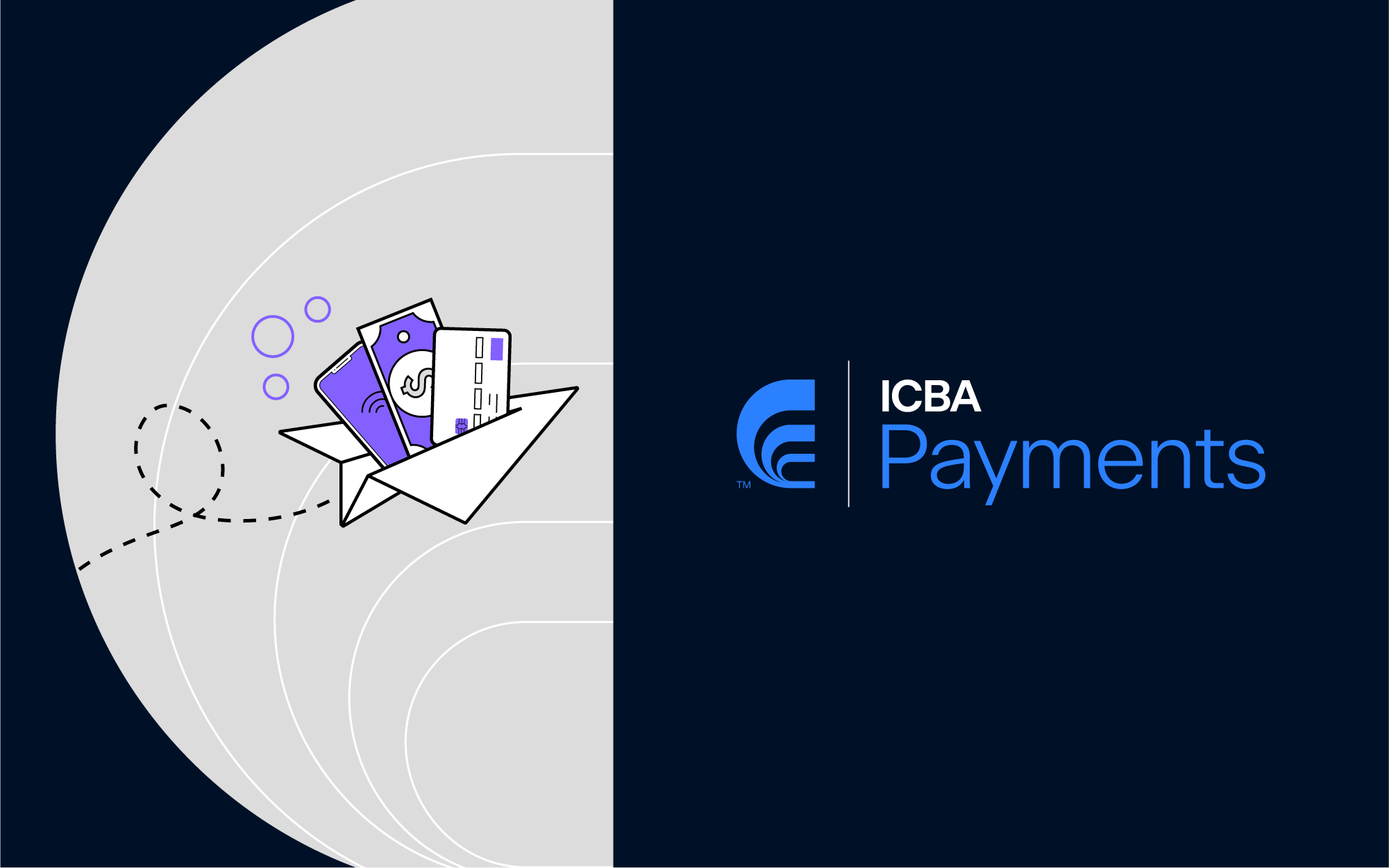For nearly two years, ICBA Bancard has been working with banks to help them prepare for instant payments and the imminent launch of FedNow. We’ve facilitated countless webinars, spoken at conferences, and discussed the topic when meeting with bankers in person. When talking about FedNow, there are certainly questions that always seem to bubble to the surface.
Q: Is FedNow the same thing or the Fed’s answer to Zelle and Venmo?
A: The Clearing House’s RTP network was launched in 2017 and was the first instant payments network—or rail—in the U.S. FedNow will serve as the second instant payments rail—launches this July. Whereas money movement solutions like Zelle and Venmo can connect to a variety of payment networks (e.g., RTP, FedNow, ACH, etc.) and ride on top of the payment networks, FedNow and RTP are the instant payment networks themselves, and support credit push transfers between participating financial institutions.
Q: Will community banks need to implement FedNow to stay competitive?
A: Broadly speaking, yes. While timing for implementation will vary from bank to bank, and there is no one-size-fits-all payment strategy for community banks, the market is moving towards instant payments, both globally and within the U.S. Entities such as the U.S. Treasury have signaled intent to leverage FedNow at some point, and as more of these large disbursers of funds start to send instant payments, it will be important for account holders to have this immediate access to funds in order for community banks to remain competitive.
Interested in discussing this and other topics? Network with and learn from your peers with the app designed for community bankers. Join the conversation with ICBA Community.
Q: Should my bank implement as a ‘receive-only’ institution, or do I need to become a full participant, and both send and receive?
A: Even if you are planning to implement as a full participant and send (and receive) transactions on FedNow, it may make sense to launch first as receive-only. Implementing receive has fewer fraud risks and operational considerations than send. Additionally, in order to send transactions, your bank (or service provider) will need to account for integration with digital channels, which generally increases lead time. For these reasons, we view receive-only as a great way to dip your toe in the water and begin gaining experience and delivering value to your customers while you work through the other operational, risk, and technical considerations.
Q: What do we need to consider from a fraud perspective as we prepare to implement FedNow?
A: The instant settlement and irrevocable nature of FedNow present new considerations when it comes to fraud. The FedNow Service has fraud controls at the network level, including network transaction limits and negative lists (enabling your bank to define RTNs and account numbers where no traffic should be sent/received). Additionally, your bank should leverage other new or existing fraud detection solutions to support instant payments activity. Talk to your existing or prospective vendor partners to learn more and refer to additional resources referenced in another Bancard Confidential article, “Playing Catch-up With FedNow: The Greatest Hits of FedNow Resources and Reference Materials.”
Q: When should we implement FedNow? Do I need to be ready by a certain date?
A: The FedNow Service launches in July, though it is not expected that all banks will be live on the service this summer. An early adopter phase and then general availability phase will follow the pilot launch. There is no specific target that is right for every bank, though it is safe to say that the second half of 2023 through the end of 2024 will be a heavy implementation period for community banks. What is most important is that you move forward in the planning phase of your instant payments journey if you have not already done so.
Q: Where can I find more information?
A: See the article on page y for a great list of helpful references and resource materials. Additionally, Bancard is always here to help! Contact Bancard@icba.org if you have questions.






